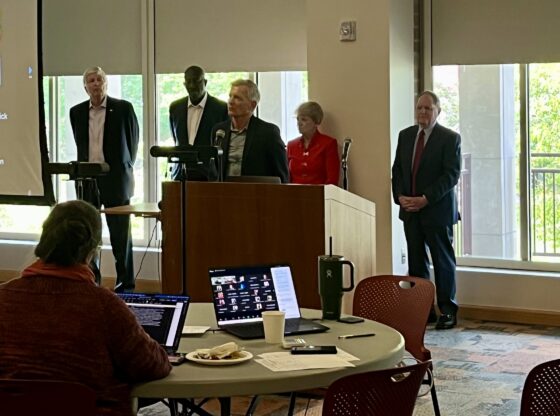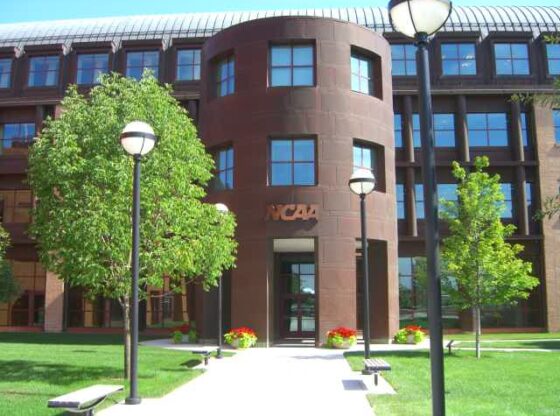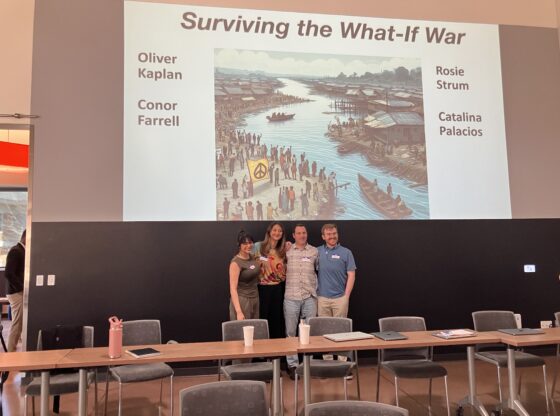I’m sure many of you have not forgotten the pet-eating conspiracy Trump began parroting during his disastrous debate performance against Harris. It was shocking and hilarious to those of us who despise the man. After all, it is one of the most insane statements to come out of the mouth of a presidential candidate during a debate.
But for those living in Springfield, Ohio — the focal point of the conspiracy — many residents aren’t laughing at all. For those belonging to the immigrant community, Trump’s statement is just another instance of Americans in positions of power demonizing and disregarding the humanity of those who come to this country looking for a better life.
Since the debate, dozens of bomb threats have been made at schools, hospitals and government buildings in the small town of 58,000 people. Many of these calls have come from overseas actors, aiming to take advantage of the moment and sow further discord. As a result, the governor of Ohio has mobilized state troopers to schools across Springfield to ease the stress of parents, despite the bomb threats being false alarms.
The brunt of the burden has been placed on the Haitian immigrants in Springfield, who legally moved to the community to fill lower-income manufacturing and service industry positions that had previously remained vacant. Despite some growing pains, their arrival has resulted in a 6% wage increase in a town previously associated with economic decline.
Regardless of what the media and news might get you to believe, the demographic change has resulted in an increasingly diverse environment where the standard of living has collectively increased.
That being said, feelings of security on behalf of the Haitian community have quickly dissipated. Community member and activist Vilbrun Dorsainvil, who fled Haiti after someone attempted to kidnap him, was asked if he is afraid as a result of recent events.
“Before I was not…[but]…right now I am afraid there might be a mass shooting on us,” he responded.
These fears are not only reasonable but well-founded. The greatest terrorism threat in this country continues to be racially and politically motivated violence from white supremacist groups.
That being said, we as a society need to dig deep and figure out how to take power away from the conspiracies that are threatening the safety of communities across the country. These conspiracies are a collection of wild statements that we as reasonable human beings tend to laugh at and mock, and a lot of times we are aided in this process by liberal and moderate mainstream media outlets. But giving precious time to these dangerous ideas is as profitable for these media outlets as it is dangerous for those belonging to the communities affected by the conspiracies.
What media outlets need to do is spend as little attention as possible on right-wing conspiracies, because even though they are picking the theories apart, they are still adding fuel to the fire and even legitimizing the conspiracies in the eyes of those who already believe them. Briefly noting that Trump said something false is far different than having a panel argue about something reasonable people already know is false.
All in all, stop wasting time and resources on conspiracies, and instead use those resources to paint a picture of why we should all appreciate and love those who come to our country.
If you need proof that mainstream media is failing us in this respect, look no further than the interview VP pick J.D. Vance had with Dana Bash on CNN last week. During the interview, Bash asked Vance if he would acknowledge that the pet-eating conspiracy is dependent on false claims.
After deflecting for a bit, Vance slipped up and said, “If I have to create stories so that the American media pays attention to the suffering of the American people, then that’s what I’m going to do.” Bash caught on to the slip-up, telling him that “you just said that you’re creating stories.”
After a long and awkward pause, Vance eventually gets to the point of all of this. “I say that we’re creating a story meaning that we are creating the American media focusing on it.”
And that is exactly what conspiracies like this have done. Every election year it feels as if we are constantly bombarded with headlines and stories about an immigration crisis with stories and anecdotes often used to generalize the entire immigrant population. What this particular conspiracy theory and others like it have done is shift unwarranted and negative attention onto a population in this country and place blame on them for economic and social issues that have nothing to do with them.
When thinking about what an immigration crisis is, it is important to ground ourselves and think about how immigration might be affecting our daily lives. Media outlets often look to an increase in crime as being a characteristic of an immigration crisis.
However, a quick look at government data shows us that undocumented immigrants in this country commit fewer crimes than U.S. citizens. Media also tends to attribute the fentanyl crisis to immigrants even though most fentanyl is smuggled into this country through legal ports of entry by U.S. citizens.
Another popular one is that immigrants are taking American jobs. Yet what they always fail to mention is that they are mostly taking jobs that Americans are already refusing to do. Tom Schaller and Paul Waldman, in their book White Rural Rage, describe how “profit-hungry agribusiness executives fill their factories” with immigrants who work “long hours” with “meager pay, few benefits and high burnout rates.”
These are jobs that no privileged American wants to work in the first place, and rightly so. The working conditions are atrocious, and instead of talking about how immigrants are taking jobs, we should show how grateful we are for them by fighting for fair labor practices and forcing these companies to acknowledge the humanity of their employees. When it comes to the immigration crisis, Americans love victimizing themselves before taking a second and thinking about who the real victims in a given situation might be.
The true victims of our immigration crisis are often the immigrants themselves. These are people who risk everything looking for a better life for themselves and their families. This often results in becoming the victims of human trafficking schemes and extortion. These are also people who are more likely to be the victim of financial and labor-based exploitation. And because of the rhetoric coming from the right, and at times the rhetoric of the left, they are also more likely to be the victims of hate crimes.
So what should the media do to combat these outrageous conspiracy theories that threaten the safety of immigrants and the entire communities that immigrants live in, such as what has happened in Springfield, Ohio? Start by telling their stories.
Show the American people how in reality they are not that different from us. We all want to live fulfilling lives, and we all want to be the best that we can for our friends and our families. Instead of leaning into the xenophobic political climate that the right has successfully established, media outlets need to dramatically distance themselves from the status quo and create a counter-narrative on immigration that highlights our similarities and not our differences.
Last week I wrote an article criticizing Kamala Harris for leaning into conservative notions of immigration, primarily in the form of conflating immigration with criminality. She has a long way to go, and what separates her rhetoric from the rhetoric of mainstream media is that her’s can turn into policy. We need civil society to do its job and pressure her on these issues as well so that we don’t have to vote for two anti-immigration candidates.
I hope all of this changes, but the best that we all can do as individuals is to take a step back every once in a while from what we see and hear, and ask if we are acknowledging the truth or trampling all over it.










